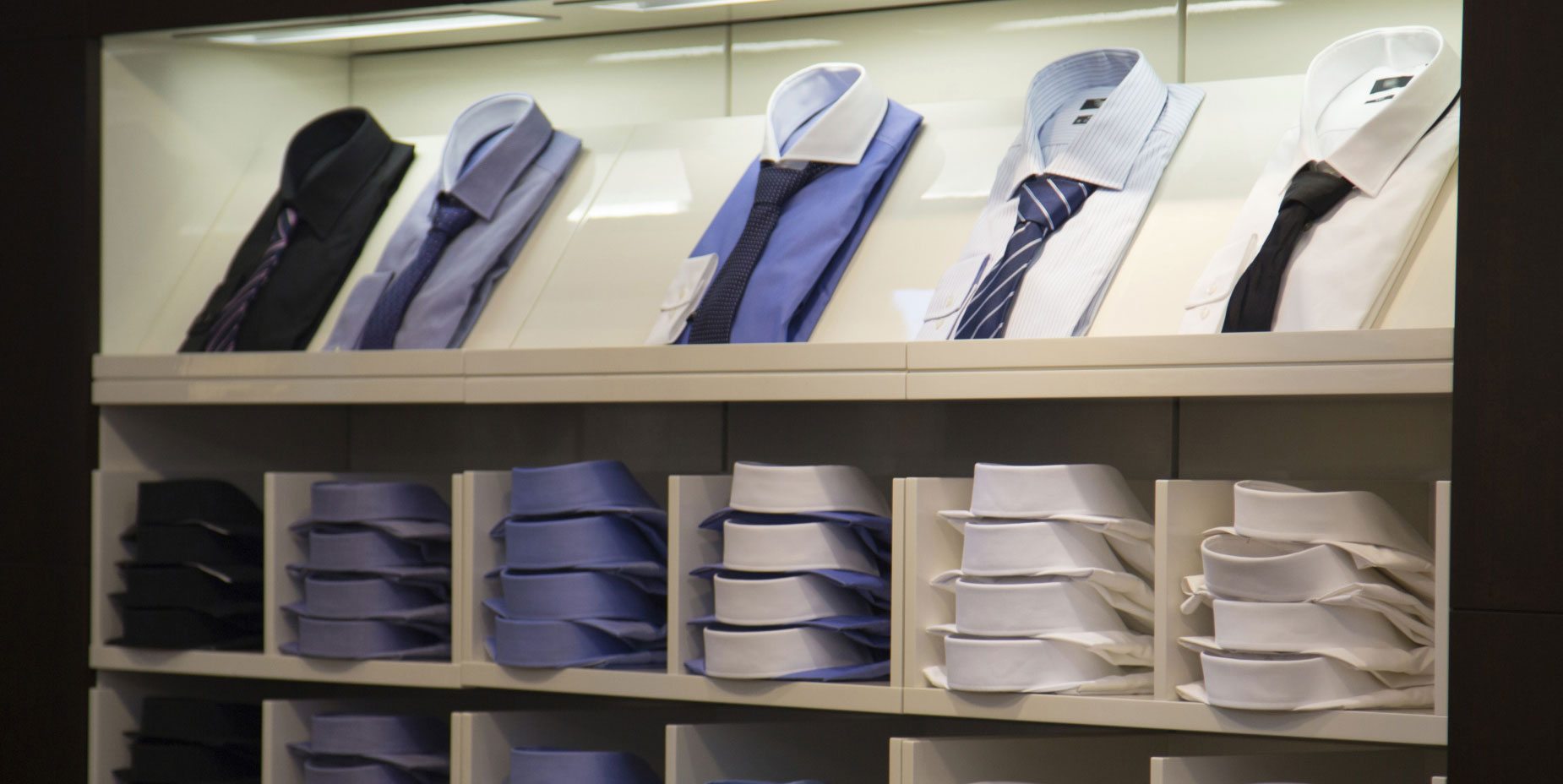In an effort to keep menswear sales as strong as they’ve been the last few years, retailers are going beyond seeking out the top trends. They are working to make these formerly aloof customers as captivated as possible, whether in-store or online. [quote]
The Doneger Group’s Tom Julian, men’s fashion director, says there are more comprehensive approaches for all male shoppers when it comes to online shopping, but stores are also remerchandising their mixes.
“One of the biggest mandates for a CMO is to keep and grow the wallet share of the shopper that is already online or in the store,” Julian explains. “Hence, dividends and perks. Many believe that men will be just as important as women for frequent shopper programs in the future.”
The NPD Group, Inc. reported last year that total U.S. men’s apparel sales reached $60.8 billion, or a 5% increase from the year before. Meanwhile, the women’s U.S. apparel market, while substantially larger at $116.4 billion, grew 4%.
About 4 in 10 men (39%) say they “love or enjoy clothes shopping,” up from 30% five years ago, according to the Cotton Incorporated Lifestyle MonitorTM Survey. In fact, NPD finds that menswear was among the hottest categories in 2014. Women’s affinity for clothes shopping has also increased, but at a lower rate, rising from 61% five years ago to 65%, according to the MonitorTM survey.
Certain trends in menswear have worked to drive a bigger interest in it, be it dressing up, blending active and sportswear, or wearing sneakers with tailored clothing. While all this could have proven to confuse male shoppers, these shifts proved to be different enough to pique their interest, but not so crazy as to intimidate them.
The trick for retailers now is to appeal to the different male shoppers with a cross-generational, omnichannel plan.
“With online shopping, the store is always open,” says Julian. “So the experience should be welcoming and informative. This means that men are not intimidated to search out a brand, learn about a trend, or dream about a coveted pricier item. Online retailers are curating an experience for all generations and with that comes a range of dressing with price in mind, dressing for an occasion, dressing for a geographic region, dressing 365 days a year and not just for four seasons.”
More than 6 of 10 (63%) men browse the internet for apparel, up from 60% five years ago, MonitorTM data shows. The number increases to 69% among those earning more than $75,000, and jumps to 72% among Millennials (those who range in age from 15 to 30 in 2014). At 51%, Baby Boomers, those born between 1946 and 1964, browse online the least.
Boomers also spend less time shopping for clothes than their younger counterparts (78 minutes in-store, 80 minutes online), the MonitorTM survey shows. Gen X men, ages 31 to 49 in 2014, shopped 90 minutes both in-store and online, while Millennials spent 98 minutes in-store and 99 online.
The NPD’s Marshal Cohen, chief industry analyst, said traditional brick and mortar retailers needed to step up their game to remain competitive.
“They need to disregard antiquated marketing and sales strategies, and adjust their tactics to better accommodate the whims of online shoppers, including the development of more dynamic pricing models, enhancing selections, and addressing convenience.”
Julian says he’s seen brick and mortars remerchandising their stores to include denim in the tailored clothing or accessories as part of sportswear. “I have also heard from some retailers that by expanding footwear and accessories in the store, the shopping experience becomes more inclusive.”
At the recent National Retail Federation’s Big Show, SAP’s Christine Fotteler, vice president of solution management, explained how the company’s new Assortment Planning for Retail application allows for a more personalized product mix. It uses predictive science to help retailers decide which products to send where, and in what quantity.
“By mining through the volumes of data from your historic sales in the respective categories, the system finds out which stores perform the same and (virtually) clusters them together,” Fotteler says. “This makes it faster and easier to plan and respond rapidly to market needs. But it’s still personalized because we can also bring in customer aspects like market or social demographic data to see which customers are shopping in each area. It really helps define the right assortment that’s very targeted for the specific customers that shop in these stores.”
Also at the NRF expo, Tom Moore, director of retail and hospitality industry for Zebra Technologies, described how the company’s Zatar platform can bring the convenience of online shopping in-store. All the customer has to do is activate the store’s loyalty app and have Bluetooth turned on.
“Our beacons can tell which products you’re standing in front of, so we can notify you on your mobile of which items complement that item — replicating the ‘Customers who viewed this also viewed…’ feature of online shopping,” Moore says. “We can also show online reviews, and provide a link to Facebook so you can ask friends what they think. Also, if dwell times show a shopper lingering, a store associate can be alerted to go provide customer service. This drives up revenue and increases the spend.”
Moore says retailers like that they can see customer dwell times and compare that to actual sales to see if their merchandise mix is on point.
“This is the next journey, being able to connect with the shoppers in store,” Moore says.
And as Julian observes, it’s crucial for stores to respond to men’s needs.
“The more the retailer addresses the lifestyle of the male shopper, the more the habits will change and positively impact the bottom line.”
